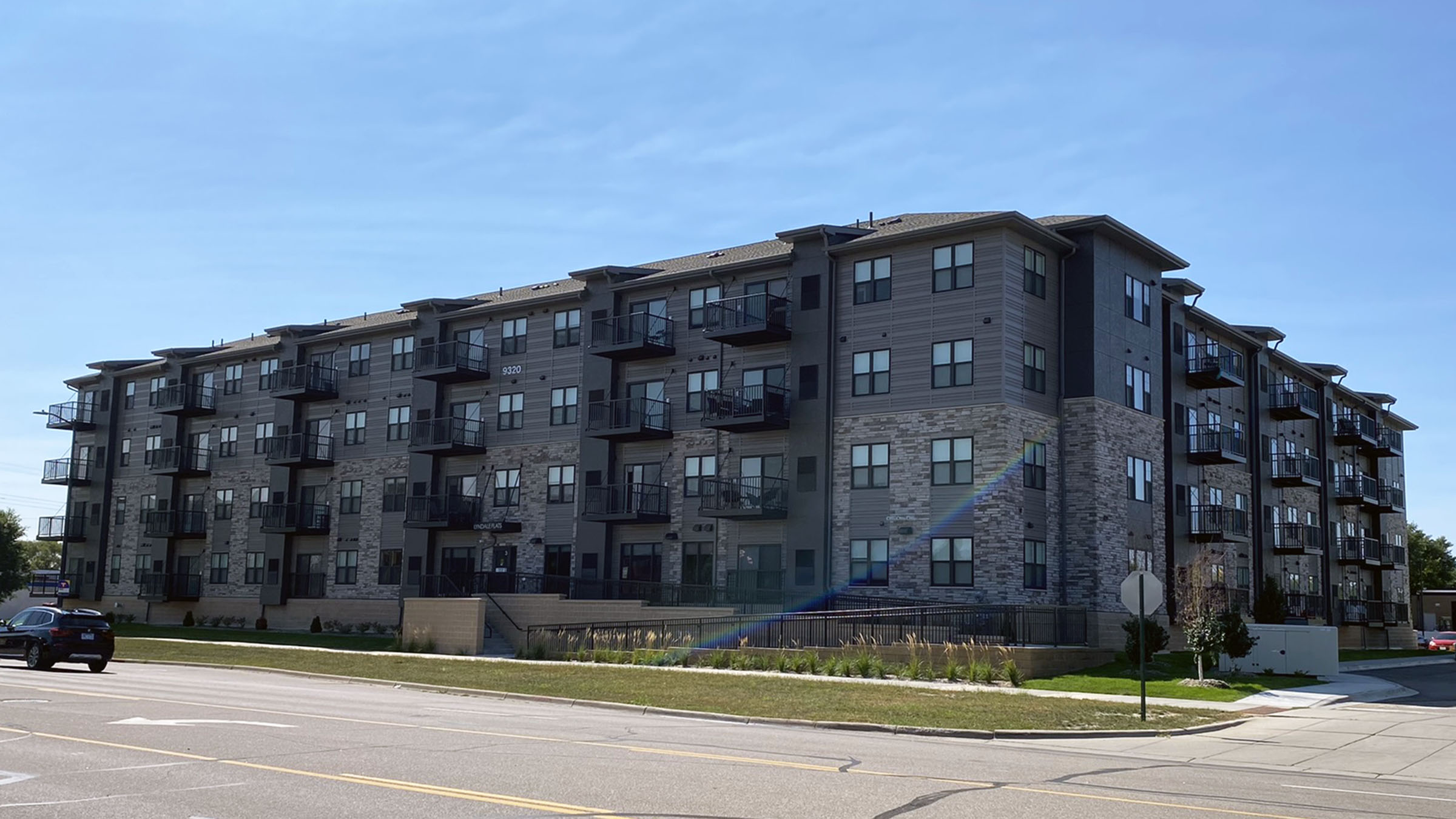State legislatures across the nation are taking a larger role in setting the rules that govern housing production. Proponents of these changes argue that better land-use and planning policies will reduce housing-production costs. Economic theory, research, and anecdotal evidence predict that the resulting increase in supply would slow the growth of housing prices.
A constrained housing supply puts pressure on renters, homeowners, and the broader economy. Previous Federal Reserve Bank of Minneapolis work, such as developing the Regional Housing Affordability Dashboard in partnership with the Itasca Project, highlights the role a healthy housing supply plays in a well-functioning housing market. As a result of this research, Minneapolis Fed leaders have stated that more housing production is needed in Minnesota to help the state maintain a healthy economy.
Understanding housing market conditions—and potential interventions to improve them—is critical to the Federal Reserve’s goal of supporting stable prices and maximum employment. The Minneapolis Fed tracks supply-supporting policy changes, and we’ve created a basic typology of reform with three broad categories. First, states and localities can allow a wider range of housing types to be built on a larger share of the land within their jurisdictions. Second, they can revisit rules that govern the physical form of housing. And third, they can improve the rules that govern public planning and approval processes.
In this article, we explore these three broad categories and identify states—and, in some cases, localities—that are pursuing them. Two important notes about these reforms: First, to meaningfully affect the economic realities of housing producers, states and localities may need to make changes in tandem across the three categories. And second, some states have used financial incentives to encourage localities to adopt reforms rather than requiring them outright.
Allowing more housing types in more places
Reforms aimed at producing a wider range of housing often create or revise zoning codes to allow for multifamily housing, “missing middle” housing, or accessory dwelling units to be built “by-right” in more places. When a landowner can build a structure by right, they no longer need to request special allowances or exemptions from a local planning board or elected body. This reduces the time and process-related costs associated with housing development.
Local jurisdictions often restrict by-right development of multifamily structures such as larger apartment or condominium complexes to limited geographic areas. Some states are intervening by enabling multifamily housing in more places. In some cases, state law requires that multifamily housing be allowed in places that align with other investments in infrastructure. For example, Massachusetts, New Jersey, Utah, and Washington incentivize or require municipalities to allow multifamily housing near public transit stations or stops. Some cities, like Los Angeles, take a similar approach, allowing developers greater design flexibility and providing bigger financial incentives near transit.
In other instances, states have opened up commercially zoned areas—normally reserved for buildings that provide office or retail spaces—to multifamily development. California’s legislature passed two bills in 2022 that make it easier to produce residential housing in commercially zoned areas under specific conditions. Laws passed by Florida and Montana in 2023 allow for multifamily projects on lots zoned for commercial or industrial development in certain places. Rhode Island and Wisconsin, meanwhile, passed laws that support residential conversions of existing commercial structures.
But what about types of housing that fall somewhere in between single-family homes and large apartment or condo buildings? Since local zoning rules often devote lots of land for single-family detached houses, with smaller areas reserved for denser multifamily housing, the construction of housing types such as duplexes, triplexes, townhomes, and smaller apartment complexes is limited. Because they are built more densely than single-family homes but less densely than larger multifamily developments, and because they are in short supply, these housing types have collectively become known as “missing middle” housing.
Oregon removed some restrictions to missing middle housing in 2019. New legislation allowed fourplexes and townhomes to be built everywhere in large cities and did the same for duplexes in medium-sized cities. California, Montana, and Washington have since passed legislation allowing for some form of missing middle housing by right on previously single-family-only lots. Localities can take this action on their own, as Minneapolis and St. Paul did in 2019 and 2023, respectively. Some suburbs in the Twin Cities area are following suit.
Accessory dwelling units (ADUs) can also bring density into neighborhoods previously reserved for single-family detached houses—even neighborhoods with an existing supply of single-family homes. Also known as in-law apartments or guest houses, ADUs are smaller detached or attached housing units located on the same lot as a primary house.
California has passed multiple laws aimed at increasing the supply of ADUs. Most recently, the state has allowed at least one ADU per single-family home and removed some of the burdensome restrictions on their development. And California is not alone in making ADU development more feasible. A land-use-reform bill that Maine passed in 2022 allowed for ADUs on most residential lots in the state. Nearby Vermont, which also legalized ADUs statewide in 2020, paired its own ADU legalization with a pre-existing housing-improvement subsidy to enable ADUs to be rented at affordable levels. Connecticut, Montana, and Utah have also all recently expanded property owners’ rights to build ADUs.
Improving building codes and design requirements
Even if a zoning reform allows for more types of buildings on a given piece of land, the rules that govern the form and characteristics of a structure can make construction financially infeasible. For example, minimum parking requirements make builders provide certain quantities of parking based on a building’s square footage or number of housing units. Developers frequently tell us that the cost of parking spaces can rival the cost of housing units on a per-square-foot basis. Additionally, researchers have found that some local codes set parking requirements at levels exceeding typical driving patterns, resulting in the underuse of costly required spots. Connecticut, Florida, Maine, Montana, Oregon, Vermont, and Washington have all passed laws that limit parking requirements or encourage municipalities to reduce them generally, or under specific conditions. St. Paul and Minneapolis have both eliminated parking requirements entirely.
States have examined various other elements of building-design rules that may unnecessarily make housing more expensive. For example, in 2021, California relaxed the rules localities can impose on the “floor-area ratio” of new construction. More stringent ratios limit the density and size of housing projects that can be built.
Developers cite other cost drivers, like façade materials that are more aesthetic than functional. While we’ve seen local examples of attempts to change such rules, we haven’t seen equivalent state-level reforms.
In other instances, localities (and California) offer cost-reducing or profit-increasing bonuses for greater density or other design elements in exchange for a developer committing to income-restricted housing within its projects.
Reforming the planning and approval processes
Even when the rules around construction have been relaxed, many projects will require approval from public bodies before the first shovelful of dirt is moved. To provide more certainty to landowners and limit costly delays, states are changing rules around how localities plan for and approve new development.
Three states recently created or strengthened requirements for localities to change their high-level planning to accommodate more housing. In California, localities have long been required to plan for their local housing needs as determined by the state. If a locality passes a sufficiently housing-friendly plan, it receives a state accreditation that is valid for eight years. If it doesn’t, developers can access a “builder’s remedy” that allows them to move forward with certain projects regardless of local zoning. In 2018, a new state law required localities to be more supportive of housing development.
The impact of the 2018 law is becoming more apparent as localities’ accreditations under the previous, looser processes are expiring. In some cases, their updated plans aren’t meeting the state’s newer, often-stricter requirements for allowing residential development. In such localities, residential projects can proceed in more places than their plans currently allow.
Massachusetts legislators have changed several state regulations to ease housing development. They made the penalties more severe for communities that don’t comply with state planning requirements. Certain localities that don’t provide for multifamily housing will lose eligibility for other state-funded financial resources. These changes happened in concurrence with tweaks allowing localities greater flexibility to meet their goals.
Massachusetts also lowered the political hurdles for new developments by decreasing the approval threshold for certain local land-use decisions from a two-thirds majority of the relevant voting body to a simple majority. Additionally, the state’s laws provide for a simple application process for affordable housing and allow developers to appeal local zoning denials to a state-level body.
Montana’s 2023 housing reforms included new rules for land-use planning that called on localities to do thorough analyses of population growth and housing needs in their city comprehensive plans, and to pick from a “menu” of different options that would encourage the creation of more housing supply.
Other legislative changes have considered ways to increase the speed and predictability of planning approvals for new housing, or to reduce discretionary denial power over developments. For example, in 2023, Rhode Island made changes that could simplify the approval process for a typical housing development.
Local procedures around housing development and permitting vary across the country, so states must customize procedural reforms to these local contexts. Consistent across these reforms, however, is a focus on making development approval more effectively planned and efficiently implemented.
Building to benefit all
As these types of policy changes continue to proliferate in statehouses across the country, the Minneapolis Fed will provide policymakers, advocates, and researchers with a clearer understanding of them—and, eventually, the impact they are having for communities and states throughout the country. Successful efforts to help regions build more homes and increase housing affordability will have beneficial effects for both households and our greater economy.







